Origins of Patronage. Gaius Cilnius Maecenas and his support of the arts.
The term “patronage” refers to the activity of anyone who favors the arts by granting munificent support to those who produce them (artists, writers, musicians, filmmakers, and so on). The term today mainly designates the activity of companies or individuals who financially support the production of art, but one can also speak of “state patronage” where it is a public body that supports arts programs. The term, which is also common in other languages(mécénat in French, mecenazgo in Spanish, mecenato in Portuguese, Mäzenatentum in German, and so on) is derived from the name of the Roman politician Gaius Cilnius Maecenas (Gaius Cilnius Maecenas; Arezzo, 68 b.C. ca. - 8 B.C.), adviser to the emperor Augustus, known precisely for his celebrated advocacy of the arts. Born in Arezzo, a city to which he always remained attached and which today has dedicated its National Archaeological Museum to him, he belonged to a very wealthy family, which had noble Etruscan origins (the poet Propertius, one of the many literati supported by Maecenas, is said to have called him “Maecenas eques Etrusco de sanguine regum,” or “Maecenas, knight with Etruscan blood of kings”): after a brief military career, around the age of 30 he began his political career, both in the diplomatic and administrative fields. The beginning of his career, in particular, is set in 40 BC, when, after the war of Perugia was over, he was sent to Sicily to arrange the marriage between Octavian (the future emperor Augustus) and his second wife Scribonia. As a result of this activity, Maecenas would always be one of Octavian’s most trusted advisers, going so far as to exercise power on his behalf when the future emperor was engaged in his own military campaigns.
The two decades from 29 B.C.E., the year in which Octavian initiated the reforms that would lead, two years later, to the birth of the empire (the founding date is conventionally set at 27 B.C.E.), to 8 B.C.E, the year of Maecenas’ demise, appears stingy with news: scholars have often thought that, in this period, the knight of Etruscan origin had to some extent lost the favor of Augustus, but in fact Maecenas’ withdrawal from public life seems to be rather due, explained scholar Pierfrancesco Porena, to the institutional set-up that Octavian gave to the state. The founder of the empire, who became Augustus in January 27 BC, “redesigned,” Porena wrote, "the system of relations between the ancient magistracies and the senate on the one hand, and his personality endowed with auctoritas, a very broad imperium and consular powers on the other“, and in this new arrangement ”there was no longer any place for a function such as that of Maecenas, alien to any career pattern and to any mandate legitimately endorsed by the senate or the Roman people, and based only onamicitia with Caesar’s son. The victorious Augustan reforms atrophied Maecenas’ chances of inclusion in the institutional structures of the new regime." Maecenas and Augustus continued to remain friends, however, and the Aretine continued to advise the emperor: moreover, his distance from his political career most likely allowed him to cultivate his own activities in support of the arts, which he had been pursuing well before 29 BCE anyway. Maecenas’ activity as a supporter of artists was already lauded in first-century AD Rome.: Martial, for example, lamented that in the Rome of his time there was no longer a Maecenas to protect the arts, and the same remarks are expressed by Juvenal in Satire VII, which stigmatizes the habit of the wealthy in the Rome of the time of spending money to flaunt their status in a vulgar manner and instead proving to be very park-like when it comes to supporting the arts and letters.
In Rome, Maecenas had gathered around him a circle formed by the most important literati of Augustan Rome, starting with Virgil, Horace , and Propertius (Horace, in particular, was a close friend of Maecenas and dedicated to him the Epodes, the Satires , and the first three books of the Odes), to continue later with Lucius Varus, Quintilius Varus, Plotius Tucca, Domitius Marso, Gaius Melissus, Octavius Musa, Valgius Rufus, and several others). Maecenas had on his side a strong literary expertise , and was himself a man of letters (his works are known to us, however, only through a few fragments nevertheless sufficient to demonstrate his knowledge and wide culture, which ranged from Greek poetry to Latin literature, passing through the Etruscan language, also in relation to his origins), as well as ample dispositions economic resources, which also drew him some criticism, since the knight’s lifestyle was anything but austere, and thus far from the Roman tradition. It is in particular Seneca, in epistle 114 to Lucilius, who offers a very peculiar portrait of Maecenas, described as an all too refined man who wished to show off without concealing his vices, and whose eloquence was as “degenerate” and “corrupt” as that of a drunkard, his words as singular as his home, his wife, and his friends. Other contemporary writers, moreover, do not fail to describe him as an extravagant character, in dress as in behavior. Porena explains these sides of Maecenas’ temperament and attitude as a kind of continuation of his Etruscan origins: “his behavior,” the scholar wrote, "evoked the ’double’ of the Etruscan aristocratic tradition, celebrated then in the god Vertumnus - virile and languid at the same time - by the Umbrian-Etruscan Propertius“, and ”the love of luxury constituted an explicit adherence to the Etruscan aristocratic tradition, which had fused full political-diplomatic reliability and solid operational skills with the comforts of a lavish life." In the same way should be read the relationship with his wife Terenzia, who enjoyed freedoms that were not usually granted to a Roman woman: in this, too, Maecenas perpetrated the tradition of great freedom, for the time, enjoyed by Etruscan women. Hers was thus an essentially isolated figure, and probably her standard of living must have had repercussions on her cultural activity as well.
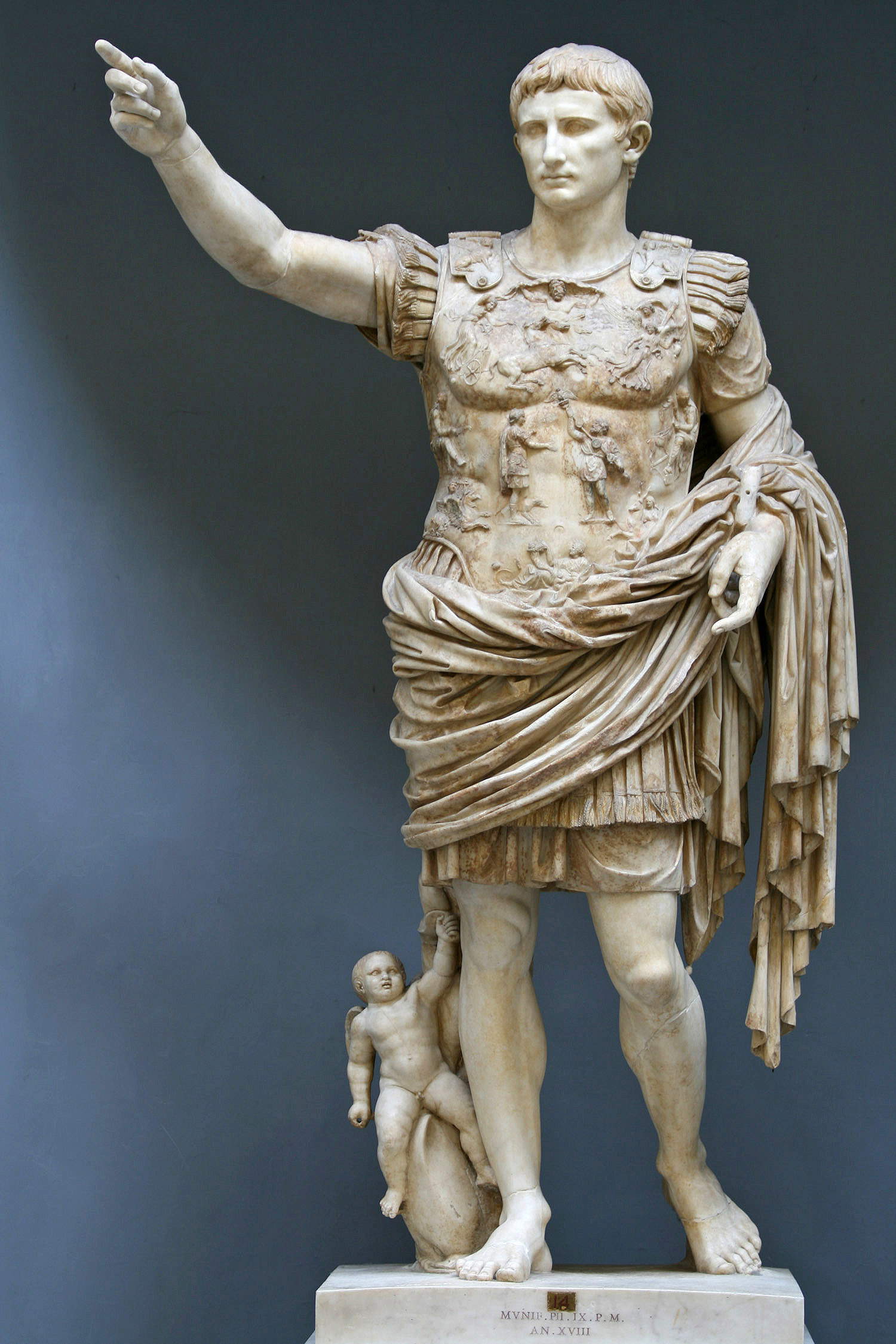
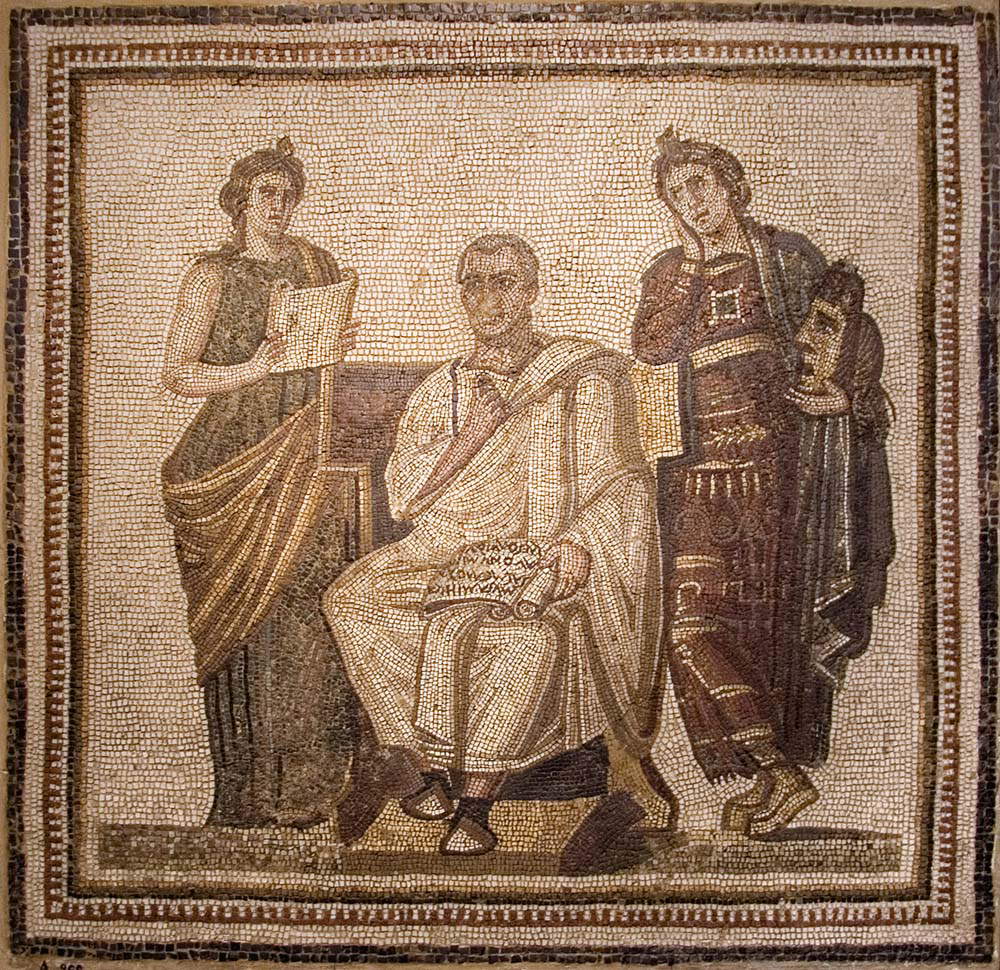
A rather well-known portrait of Maecenas is the one we read in the Historiae of the historian Marcus Velleius Paterculus, written in 30: “born a knight but of splendid breed, a vigilant man when things required vigilance, far-sighted and capable, but when at rest from his activities, he gave himself up to luxury and was more effeminate than a woman.” It is a portrait that corresponds to the image that other contemporaries have also given us of Maecenas: a well-balanced man who did not take advantage of his closeness to Augustus, who knew how to manage his political activities with rigor, seriousness and composure, and who in private, however, loved to indulge in luxuries that might have seemed excessive, especially in the eyes of a Roman society that saw Maecenas’ looseness as a flaw.
The center of his otium, a term by which in his case it is necessary to designate his cultural activity outside active political life, was the sumptuous mansion with a garden (the famous Horti Maecenatiani) that Maecenas had built for himself on theEsquiline Hill in Rome, and where there was no lack of places for conversation and receptions, a spa space, and a number of rooms where Maecenas displayed his art collections. Such a sumptuous residence (which, moreover, was unusual for a knight: usually a domus so similar to a palace was a prerogative of a senator or at any rate of some personage at the top of the public administration) that after his death it became the property of Augustus (who, moreover, we know was greatly grieved by the death of his friend). Part of Maecenas’s collections, moreover, survives: what remains of the collection was found in the only part of the domus still preserved, theAuditorium (a summer triclinium, a kind of dining room), now run by the Capitoline Superintendence and open to visitors by appointment. These are mainly statues derived from Greek models (now all preserved in the Capitoline Museums, which has a room dedicated to the Horti Maecenatiani), among which are worth mentioning a splendid Amazon’s Head derived from Greek models, a Hellenistic Marsyas statue, a famous statue depicting a dog, made of very rare Egyptian marble and of Alexandrian production, and some statues depicting the muses. These are works that testify to a distinctly refined taste, a culture evidently oriented toward Greek art, and also a predilection for unusual objects.
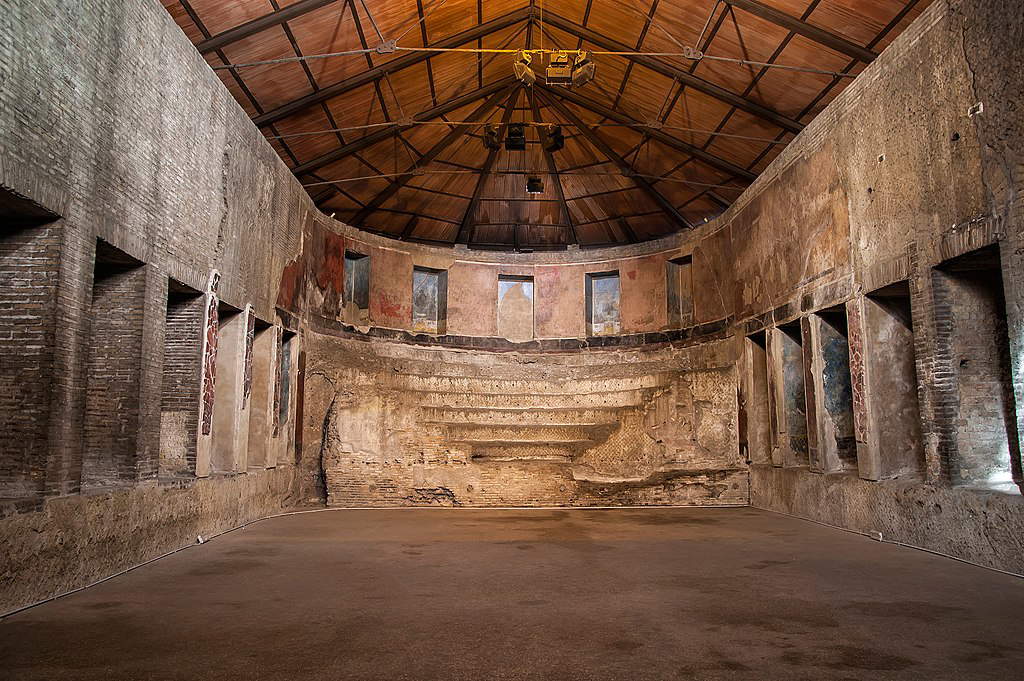
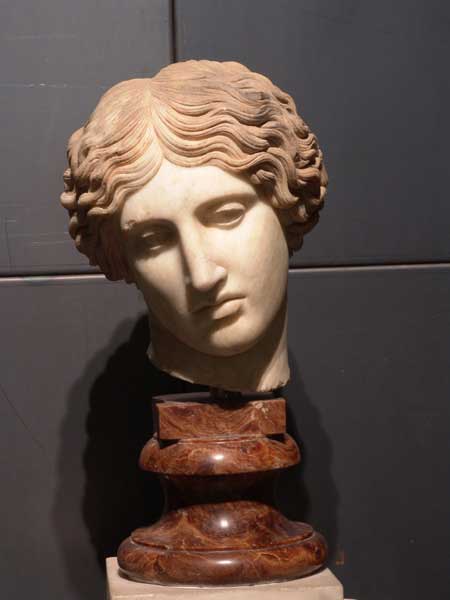
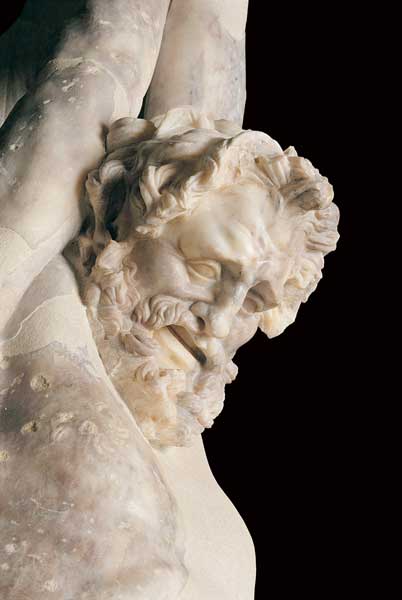 Roman art (from
Roman art (from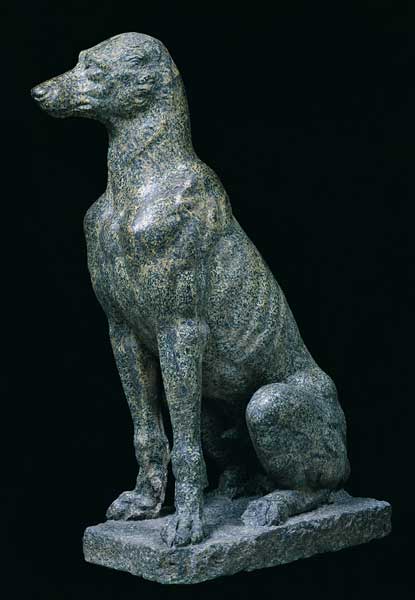
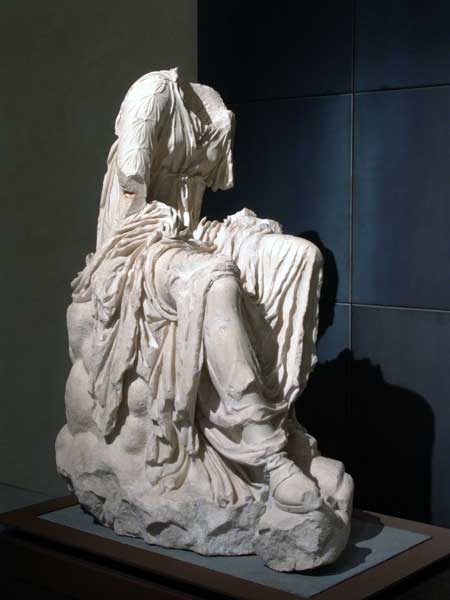
The artistic-literary products of the circle of Maecenas were not, as has also been thought, aimed at propaganda actions, but were, if anything, intended for the educated classes and elites of Rome, and we do not know what their political bearing was, and the return for Augustus was mainly in terms of his ’image, as a refined prince who had for an adviser a man of exceptional culture who supported artists (although a separate discussion should be made for Virgil’sAeneid whose purposes transcended those of indirect image return for the emperor). Maecenas’ relations with his literati remain unclear, partly because we do not know much about the historical figure: there is no biography of him written by a contemporary, and what we know of the knight we have been able to learn from the mostly fragmentary comments of the men of his time. As mentioned, it has long been thought that the circle of Maecenas was a kind of Augustan propaganda circle: instead, today we tend to assume that, in a framework in which in any case Maecenas and Augustus intended to form consensus by supporting the arts, the men of letters in his circle actually enjoyed a certain independence, although, as scholar Luca Graverini has written, the solution to the problem of the ideological nature of the circle of Maecenas “seems to be beyond our reach: [...] the available sources are problematic and subject to a wide range of interpretative possibilities.” There are, however, firm points on which one can try to reconstruct the nature of the relationship between Maecenas and his artists, beginning with the fact that his position defiladed from active politics might have allowed him not to be overly intrusive and, at the same time, to prefer and promote even uncommitted art, however committed poetry nonetheless demonstrated ideas obviously in line with those of Maecenas and Augustus: “in poetry as in politics,” writes Graverini, "we see the praise of pacification after civil wars, the revaluation of the mos maiorum, of ancient traditions and public and private morality, the revitalization of Italic agriculture the exaltation of the greatness of Rome, and so on." It remains difficult, however, to understand how far any dirigiste action by Maecenas went: probably, as the scholar further explains, although the knight certainly played a leading role in organizing Augustan culture (we then know for certain that he contributed economically to the support of the literati), “he probably did not have to expend much energy in convincing the literati of the advantages offered by the new order of things: peace and internal tranquility, after decades of bloody unrest, were also propagating themselves as a subject worthy of poetic celebration.” There is, moreover, no evidence of any pressure that Maecenas may have exerted on his literati.
Have there come, finally, effigies of Gaius Cilnius Maecenas? There are four ancient works believed to be portraits of Maecenas, although it is far more likely, as will be seen, that we do not know what the knight actually looked like today: the four works that are candidates for conveying his image to us are a bust at the National Archaeological Museum in Arezzo, another bust at the Capitoline Museums in Rome, a third bust found in Galway, Ireland, near Coole Park (he came to Ireland from Italy in the 19th century), and finally a depiction on the southern frieze of the Ara Pacis in Rome. According to scholar Bernard Andreae, the bust preserved in Arezzo was probably produced in the Augustan age by a workshop active in Rome and must be a portrait of a distinguished personage from Arezzo who lived in Rome around 20 B.C., and the name Maecenas seemed to him to be the most suitable one for the portrait. Andreae’s thesis was challenged by Sara Faralli in 2018, however, because there would be insufficient evidence to establish beyond doubt that the bust does indeed depict Maecenas. The same is true for the bust in the Capitoline Museums (which, moreover, has not been on display since 1997), for the Irish one, which was imagined to be a portrait of Maecenas on the basis, probably, of the resemblance to the effigies of the knight that had become widespread since the 18th century (in the 18th century it was established in fact, on the basis of an erroneous attribution of some gems, the image of Maecenas that later became recurrent, that of a man in his later years, heavily receding hairline, and with a very pronounced nose), and for the image that appears in the frieze of the Ara Pacis.
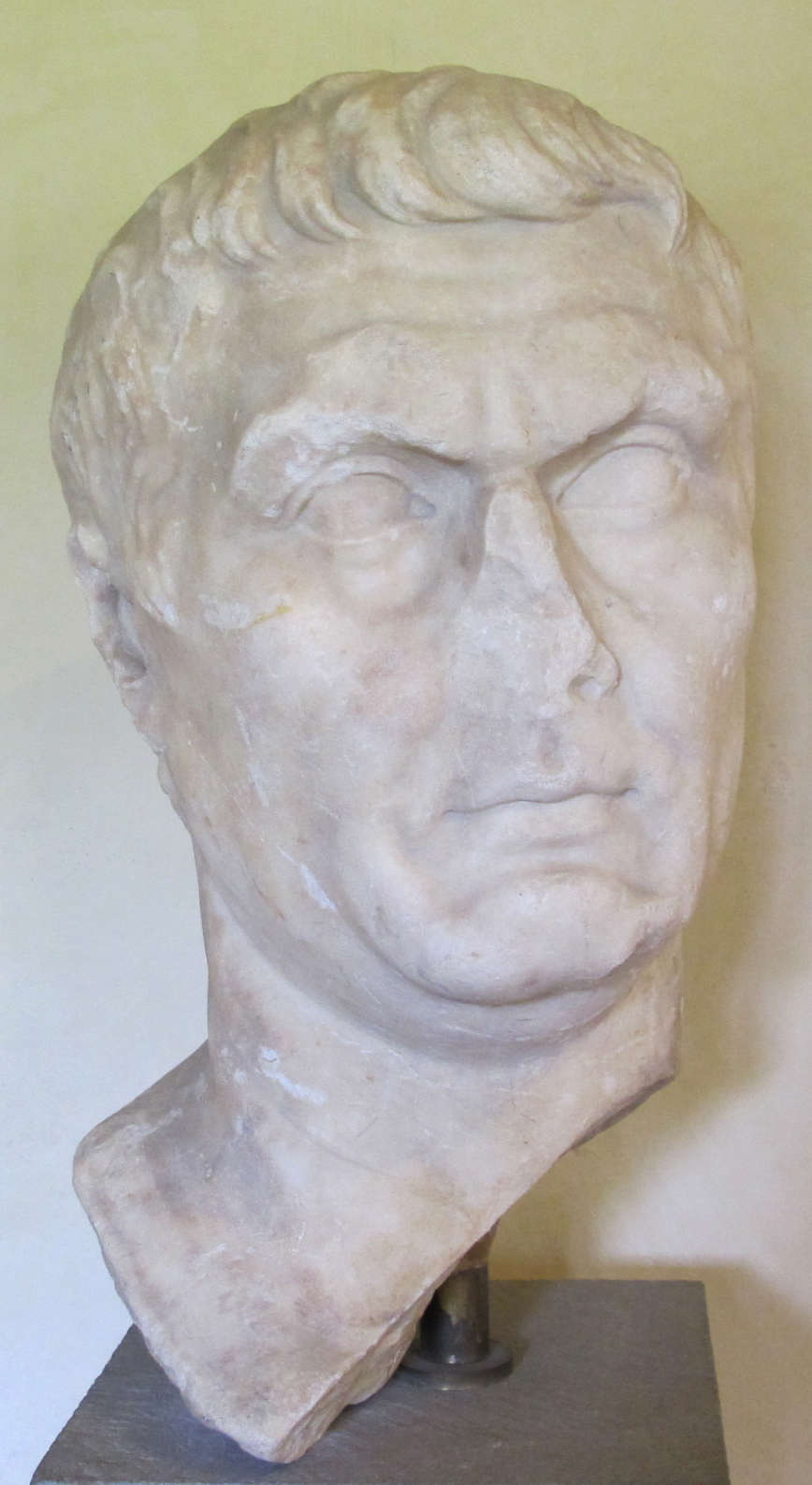
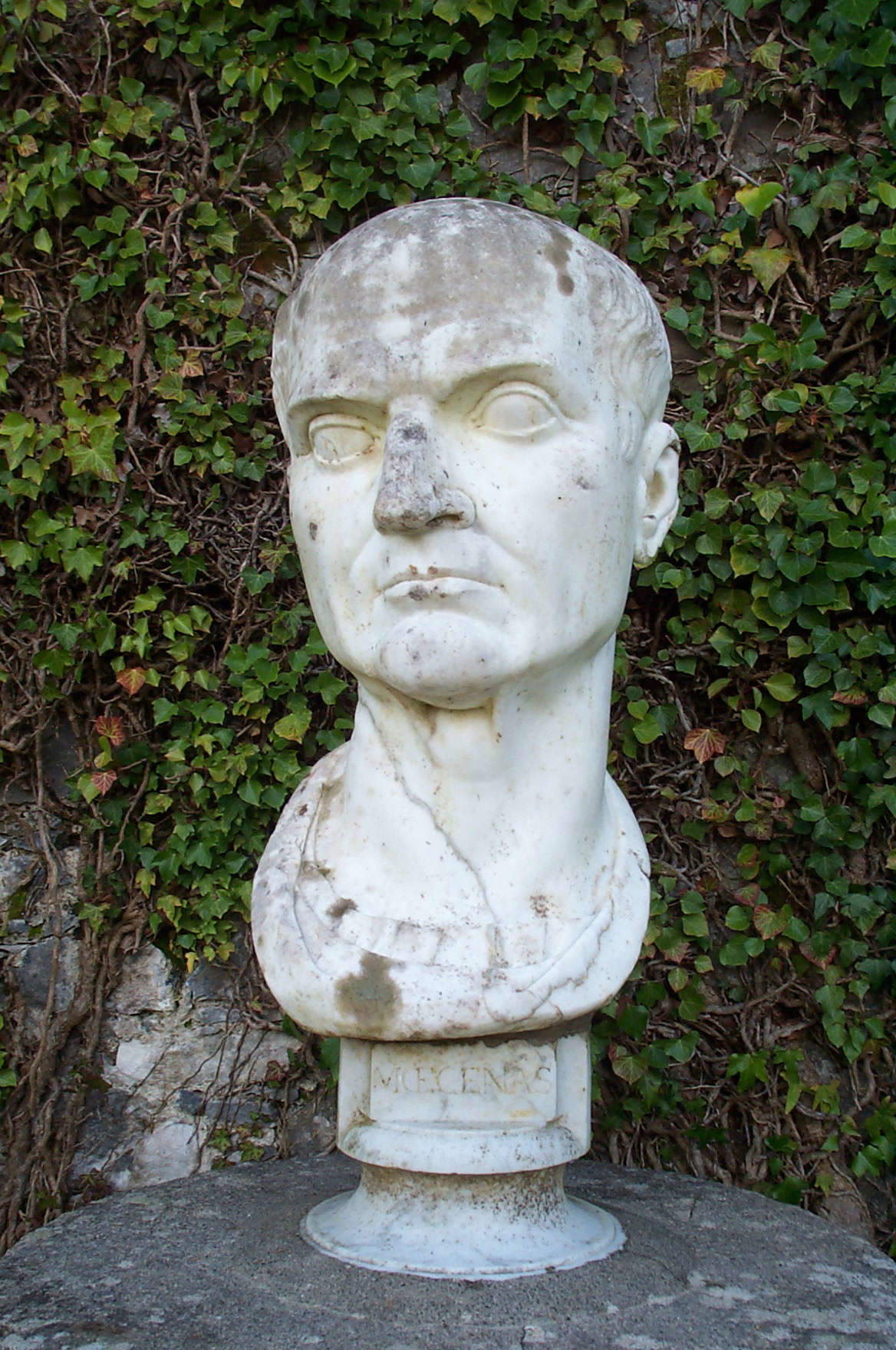
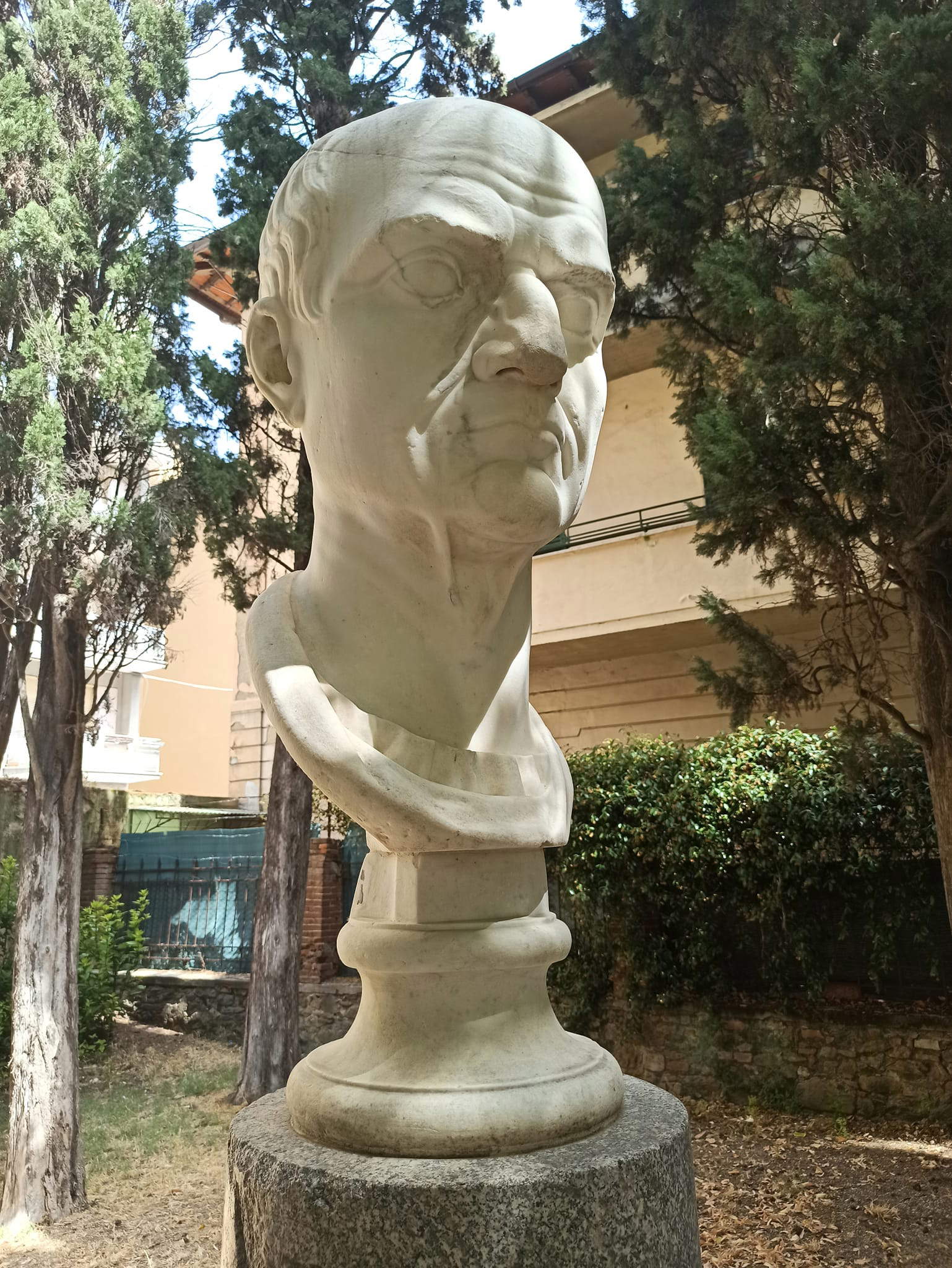
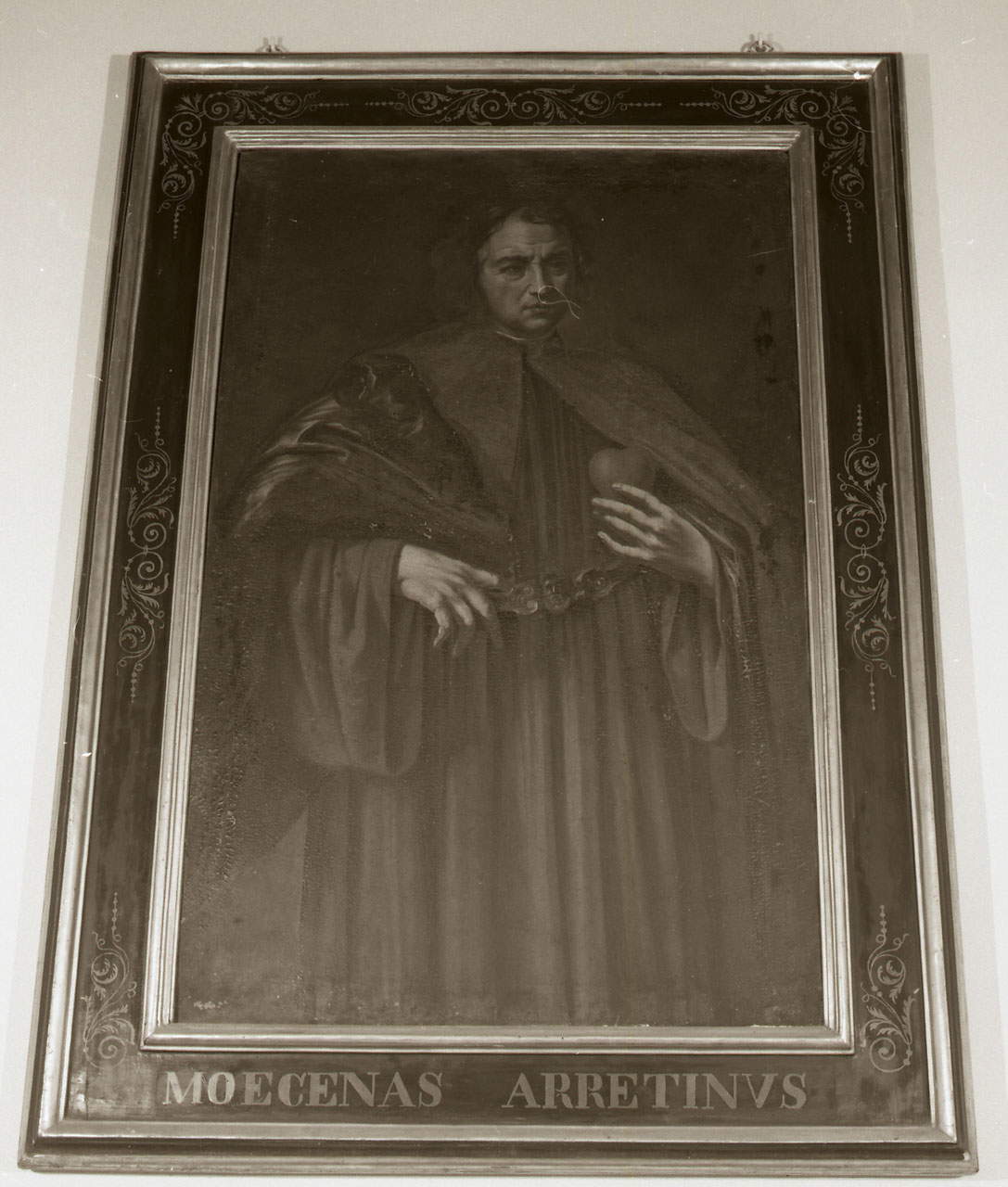
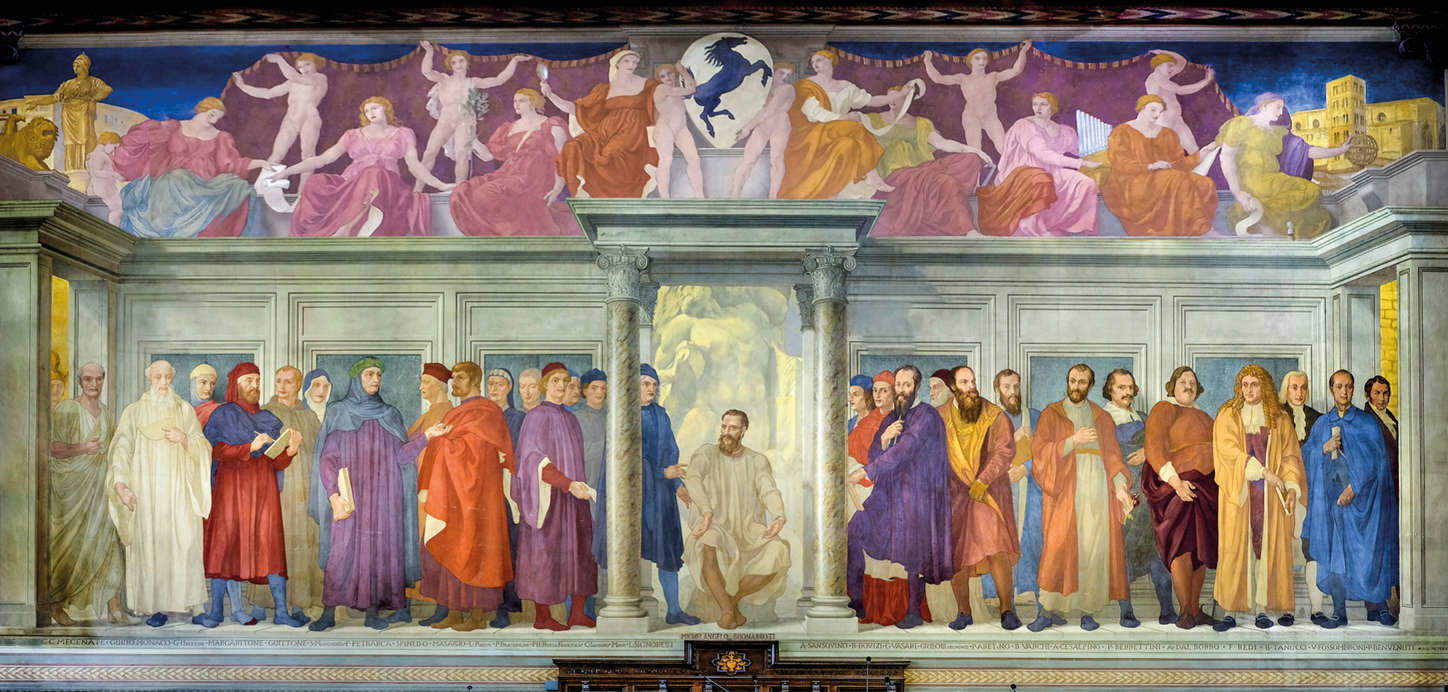
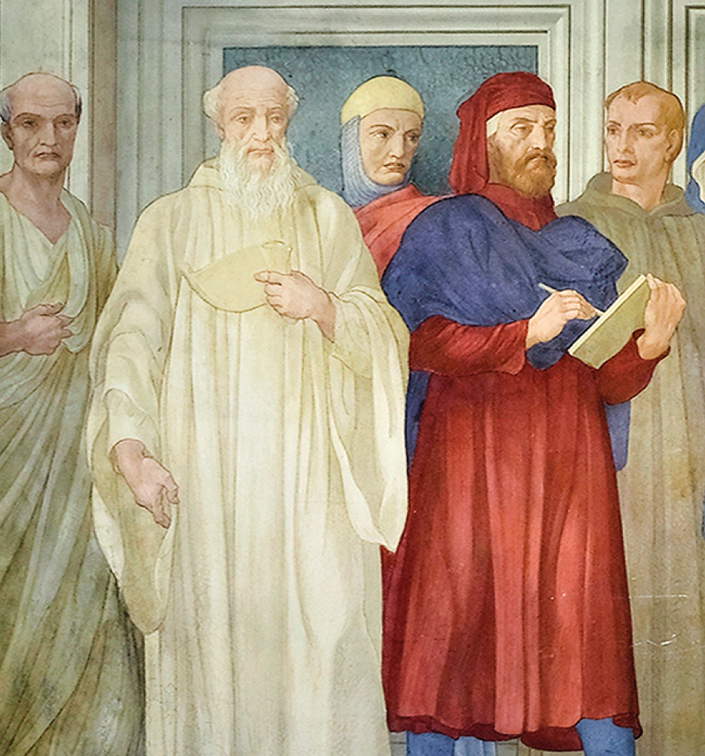
Then there are some modern images, all of which can be seen in Arezzo. The garden of the Roman Amphitheater houses a nineteenth-century bust, exemplified on the bust in the Capitoline Museums, and placed in its current location between the 1920s and 1930s (it was particularly in 1937 that it was permanently placed in the garden of the Amphitheater), at the time when Arezzo, in a climate of Roman revival , was identifying itself as the city that had given birth to the great patron of the arts. Then there is the unique seventeenth-century painting by Bernardino Santini, preserved in Arezzo’s Palazzo Comunale, where “Moecenas Arretinus,” as the inscription on the frame identifies him, is depicted according to an unusual iconography: as a mature, long-haired man dressed in Renaissance attire. And there is, finally, the large fresco painted in the 1920s by Adolfo de Carolis who, in the Sala dei Grandi of the Palazzo della Provincia, between 1922 and 1925, painted a kind of secular Majesty with the illustrious figures of Arezzo’s history: Maecenas, dressed in a toga, stands, first on the left, next to Guido d’Arezzo, the painter Margaritone, the poet Guittone, Francesco Petrarca, and Spinello Aretino. He is depicted according to the appearance that, at that time, was believed to have been handed down from Roman portraiture. In a defiladed position, because first in chronological order. But it is a position in which he stands well, since it was thus, in the background, that Maecenas conducted his action as a supporter of the arts and letters.
Essential Bibliography
- Peter Mountford, Maecenas, Routledge, 2019
- Sara Fanelli, The bust of “Maecenas” at the Roman Amphitheater: the representation of Gaius Cilnius Maecenas in Arezzo in the nineteenth and twentieth centuries between erroneous iconography and municipalist celebration in Atti e memorie dell’Accademia Petrarca di Lettere, Arti e Scienza, 80 (2018), pp. 79-96
- Pierfrancesco Porena, Gaius Maecenas. Political visibility and cultural originality in triumviral and Augustan Rome in Atti e memorie dell’Accademia Petrarca di Lettere, Arti e Scienza, 70 (2008), pp. 273-317
- Luca Graverini, Maecenas, Patronage and Augustan poetry in Annali Aretini, 12 (2006), pp. 49-71
- Bernard Andreae, Die Bildnisse des Gaius Cilnius Maecenas in Arezzo und an der Ära Pacis in Mitteilungen des Deutschen Archäologischen Instituts, Römische Abteilung, 112 (2005), pp. 121-161
Warning: the translation into English of the original Italian article was created using automatic tools. We undertake to review all articles, but we do not guarantee the total absence of inaccuracies in the translation due to the program. You can find the original by clicking on the ITA button. If you find any mistake,please contact us.




























